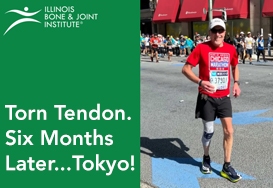What is Osteoarthritis?
Osteoarthritis is the most commonly diagnosed type of joint arthritis disease, which can affect hands, knees and hips. Knee arthritis is known to affect joint functionality causing knee pain and even leading to disability as it progresses. There are different stages of knee osteoarthritis (OA), with 0 assigned to a normal, healthy knee right up to the advanced stage 4, that is severe OA.
The Center for Disease Control and Prevention has found that the number of people suffering from knee pain disorder is gradually rising, with approximately 1 in 2 people likely to develop symptomatic knee OA in their lifetime leading to significant impact on health, workplace productivity and economic costs.
OA pain is easily identifiable through diagnostics and common symptoms. Some people who suffer from immense osteoarthritis knee pain may only show mild changes on x-ray, so it is extremely important to concentrate on the symptoms, rather than just the x-rays. Here is a look at the stages of osteoarthritis of the knee ranging from normal, minor, mild, moderate and severe stages, with appropriate treatment plans.
Stage 0 – Normal
When the knee shows no signs of osteoarthritis, it is classified as Stage 0, which is normal knee health, with no known impairment or signs of joint damage.
Treatments
There is no treatment required for stage 0 OA.
Stage 1 – Minor
Stage 1 OA patients will develop very minor wear & tear and bone spur growths at the end of the knee joints. However, at this stage it is unlikely you will feel pain or discomfort.
If the patient is not predisposed to OA, orthopedic physicians may not recommend any special treatment for stage 1. However, supplements such as glucosamine and chondroitin may be recommended. Lifestyle considerations like regular exercise may also prove to be helpful.
Stage 2 – Mild
In Stage 2, diagnostic images or X-rays of knee joints will show more bone spur growth, and though the space between the bones appear normal, people will begin experiencing symptoms of joint pain. Typically, the area around the knee joints will feel stiff and uncomfortable, particularly when sitting for an extended period, after rising in the morning, or after a workout. Though the cartilage and soft tissues remains at a healthy size, there is proteolytic breakdown of the cartilage matrix from an increased production of enzymes, such as metalloproteinases.
When your physician detects and diagnoses OA at this early stage, it is easier to follow a plan to stop the progression of this joint disease. There are different nonpharmacologic therapies such as physical activity, thermotherapy or CBD oil to help relieve the pain and discomfort caused in this mild stage. Many patients are recommended a strict regimen of exercise and strength training for increased joint stability. Additionally, braces, knee supports or shoe inserts may be used to protect the knee from stress.
Stage 3 – Moderate
Stage 3 is referred to as “moderate”, where there is obvious erosion to the cartilage surface between bones and fibrillation narrows the gap between the bones. There are proteoglycan and collagen fragments released into the synovial fluid as the disease progresses, wherein the bones develop spurs at the joints as it becomes rougher.
With the progression of osteoarthritis of the knee, there is obvious joint inflammation which causes frequent pain when walking, running, squatting, extending or kneeling. Along with joint stiffness after sitting for long or when waking up in the morning, there may be popping or snapping sounds when walking.
Over the counter NSAIDs or pain-relief therapies may be prescribed. If these methods are not effective, the orthopedic doctor may prescribe stronger pain medicine, such as codeine and oxycodone.
Patients that have not responded positively to physical therapy, weight loss program, use of NSAIDs may require viscosupplementation, which are intra-articular injections of hyaluronic acid into the knee joint. Moderate knee arthritis can be treated aggressively with three to five injections of hyaluronic acid over 3-5 weeks’ time, which may take several weeks for the treatment to start showing results, but pain relief typically lasts six months.
Stage 4 – Severe
Stage 4 is considered to be severe. In stage 4 the joint space between the bones are considerably reduced, causing the cartilage to wear off, leaving the joint stiff. The breakdown of cartilage leads to a chronic inflammatory response, with decreased synovial fluid that causes friction, greater pain and discomfort when walking or moving the joint.
There is increased production of synovial metalloproteinases, cytokines and TNF that can diffuse back into the cartilage to destroy soft tissue around the knee. The advanced stage of the disease shows development of more spurs causing excruciating pain, which makes even everyday chores, including walking and descending stairs a challenge.
In cases of severe OA of the knee, an option is performing osteotomy or bone realignment surgery, wherein the orthopedic surgeon cuts the bone above or below the knee to shorten the length and help realign it for less stress on the knee joint. This surgery helps protect the knee by shifting the weight of the body away from the site of the bone spur growth and bone damage.
Another surgical option is total knee replacement, or arthroplasty. During this surgical procedure, the damaged joint is removed and replaced with a plastic or metal prosthesis device. Recovery from surgery may take several weeks and requires patience and discipline, with continuous physical and occupational therapy to regain full mobility.
If you are suffering from knee pain, contact an IBJI physician for a proper diagnosis and treatment plan. The Illinois Bone & Joint Institute has more than 100 orthopedic physicians, and 20 locations throughout Chicago.
See an orthopedic physician, today.
Learn more about Illinois Bone & Joint Institute
- Find a doctor who treats conditions of the knee
- Find a location near you
- View all services
- Schedule online
*This content is for information only and is not intended to replace the diagnosis, treatment, or medical advice from your treating healthcare professionals. The content does not provide medical advice, does not constitute the practice of medicine or other healthcare professional services, and does not create a doctor-patient relationship. You should not rely on this information as a substitute, nor does it replace professional medical advice, diagnosis, or treatment. If you have concerns or questions, seek the advice of your healthcare professionals. If you think you may have a medical emergency, call your doctor or 911 immediately. Do not rely on electronic communications or communicate through this website for immediate, urgent medical needs. This website is not designed to facilitate medical emergencies. The use of the information is at the reader’s own risk. The links are provided for information and convenience only. We cannot accept responsibility for the sites linked or the information found here. A link does not imply an endorsement of a site.




